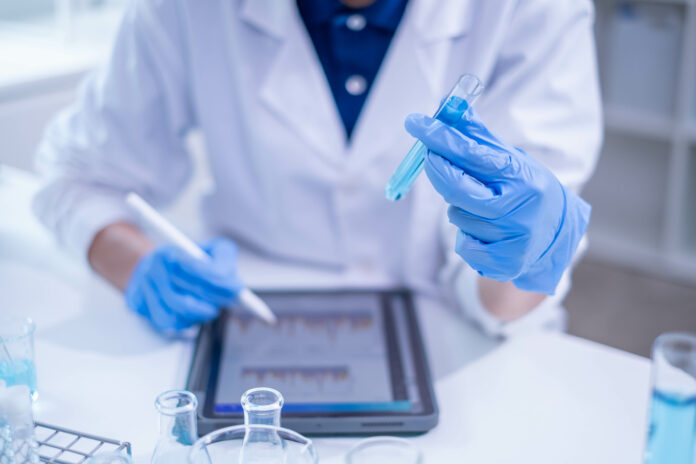Can a patent applicant or proprietor submit post-filed experimental data to demonstrate the technical effect of an invention? Or must all potentially relevant experimental data be included in the application documents as originally filed? Different Boards of Appeal of the European Patent Office (EPO) have held differing views on these questions, which play a significant role in many application and opposition proceedings and also in determining the appropriate timing for filing a patent application. In ruling G 2/21, the Enlarged Board of Appeal (EBA) has now issued guidance on which future decisions of the Boards of Appeal will be based. As a result, post-filed experimental data are admissible and will in many cases also be considered in the assessment of inventive step.
Background to G 2/21
In recent years, three different lines of case law have emerged from the Boards of Appeal of the EPO as to the conditions under which a patent applicant or proprietor can rely on post-filed experimental data to demonstrate a technical effect relevant to the assessment of inventive step. According to the first line, post-filed evidence may only be considered if the technical effect to be proven was already plausibly disclosed in the application (“ab initio plausibility”). The second, less stringent line allows post-filed evidence for all technical effects that do not appear implausible based on the application (“ab initio implausibility”). According to the third line, experimental data can always be submitted regardless of the plausibility of a technical effect in the application (“no plausibility”).
The referring Board of Appeal posed three questions to the EBA. The first question sought to clarify whether, as an exception to the principle of free evaluation of evidence, post-filed experimental data for a purported technical effect should always be disregarded if the proof relies solely on these post-filed pieces of evidence. The second and third questions concerned the admissibility of post-filed experimental data under the conditions of “ab initio plausibility” and “ab initio implausibility”.
Improved opportunities for submitting post-filed experimental data
In response to the first referral question, the EBA has now clarified that the free evaluation of evidence qualifies as a universally applicable principle before the EPO, and that experimental data should not be disregarded merely because they are post-filed (see the first headnote of the ruling). Therefore, post-filed experimental data should be admitted by the EPO bodies as evidence of inventive step, provided they are submitted in accordance with the procedural rules and, in particular, not belatedly. It is therefore no longer necessary to examine the plausibility of the technical effect for the admissibility of post-filed experimental data.
Assessment of the technical effect in the context of inventive step examination
Post-filed experimental data demonstrating a technical effect of the claimed subject matter will in many cases be considered in the assessment of inventive step. According to the EBA, the relevance of post-filed data does not depend on a minimum level of “plausibility” of the technical effect in the application. The EBA fundamentally rejects the concept of “plausibility”, stating that it does not amount to a distinctive legal concept but a “generic catchword” without a legal basis.
Thus, a patent applicant or proprietor may rely on a technical effect in the assessment of an inventive step if “the skilled person, having the common general knowledge in mind, and based on the application as originally filed, would derive said effect as being encompassed by the technical teaching and embodied by the same originally disclosed invention” (see the second headnote of the ruling). In its decision, the EBA provides only little detail on how this criterion should be interpreted. It notes that it will continue to depend on the circumstances of each case whether a technical effect demonstrated by post-filed experimental data can establish an inventive step.
The EBA, however, made a surprisingly clear statement regarding the possibility of submitting post-filed experimental data to ensure sufficient disclosure of the invention under Article 83 EPC. This issue pertains to claims in which the technical effect is defined as an individual claim feature, as is particularly the case in claims involving new medical uses of known products. According to the EBA, the scope of reliance on post-filed evidence in this context is “much narrower” than in the case of inventive step. The evidence of the therapeutic effect must already be included in the application documents. A deficiency in this regard cannot be remedied by post-filed experimental data.
Conclusions for practice
It follows from ruling G 2/21 that post-filed experimental data demonstrating a technical effect relevant to the assessment of an inventive step must generally be admitted by the EPO bodies in the proceedings and taken into account in the substantive examination. Whether a patent applicant or proprietor can successfully rely on the claimed technical effect in a specific case will depend on whether the skilled person, “having the common general knowledge in mind, and based on the application as originally filed, would consider said effect as being encompassed by the technical teaching and embodied by the same originally disclosed invention.”
In practical terms, this will likely lead to many clear cases in which a patent applicant or proprietor can rely on a technical effect that is mentioned in or derivable from, but not substantiated in the application.. First impressions have already been provided by Board of Appeal decisions referencing G 2/21. In decision T 873/21, inventive step was established with post-filed experimental data quantifying a synergistic effect that was generally described but not substantiated in the application. Similarly, in decision T 116/18, which concerns the referral case of G 2/21, inventive step was recognized on the basis of post-filed experimental data. These data demonstrated a synergistic effect that was doubtful based on the application and contradictory experimental data from the opponent.
It should also be emphasized that the guidance formulated by the EBA has general validity and does not only relate to technical effects demonstrated by post-filed experimental data. Therefore, the criterion has also been applied in subsequent Board of Appeal decisions (e.g., T 2465/19, T 990/21) as part of the problem-solution approach, without having to take into account post-filed experimental data.
As a consequence of ruling G 2/21, it is more important than ever when drafting a patent application to carefully disclose and describe the technical effects of the invention, even if no experimental evidence is yet available. Technical effects that initially appear peripheral to the inventors should also be explicitly described.
Furthermore, it must be examined in each individual case whether technical effects should be included as features in the claims. For the subject matter of claims that include technical effects as claim features to be sufficiently disclosed, said technical effects must already be credible to a person skilled in the art on the basis of the application documents. According to the EBA, this does not necessarily require that the application documents include experimental data. However, if no experimental data are included and the achievement of a therapeutic effect is not credible to the skilled person based on the application documents, this lack of disclosure cannot be remedied by submitting post-filed experimental data.
Key Points
- The principle of free evaluation of evidence is universally applicable before the EPO.
- Post-filed experimental data are admissible as evidence of inventive step, provided they have been submitted in accordance with the procedural rules.
- A patent applicant or proprietor can rely on a technical effect if the skilled person, having the common general knowledge in mind, and based on the application as originally filed, would derive said effect as being encompassed by the technical teaching and embodied in the same originally disclosed invention.
- Technical effects defined in the claim, such as therapeutic effects, must be credible based on the application as originally filed. A deficiency cannot be remedied by post-filed experimental data.
Author

Dr. Albrecht von Menges
Uexküll & Stolberg, Hamburg
Patent Attorney, Partner
Author

Dr. Johannes Heidemann
Uexküll & Stolberg, Hamburg
Patent Attorney

